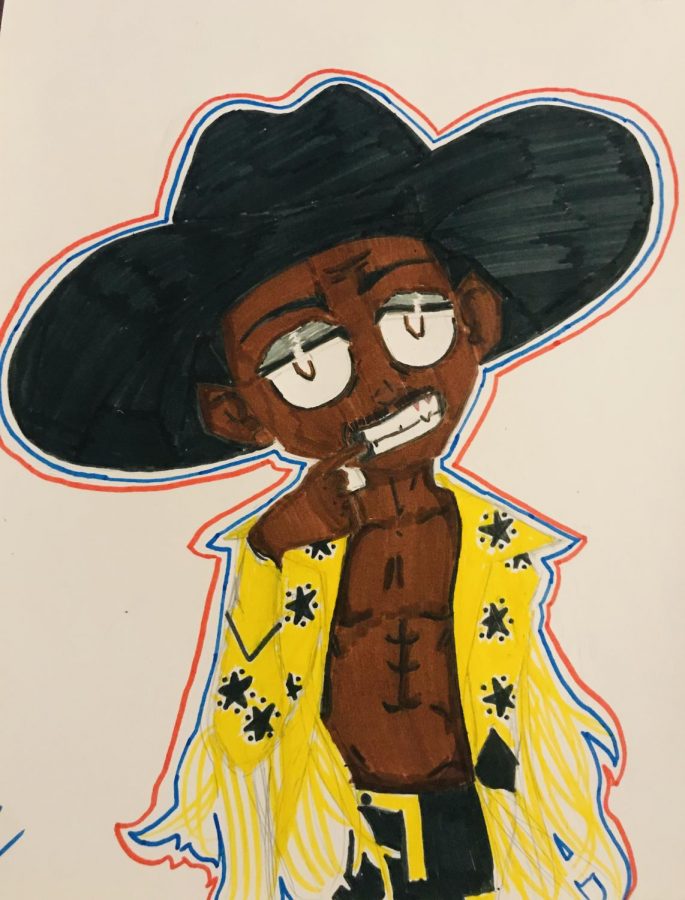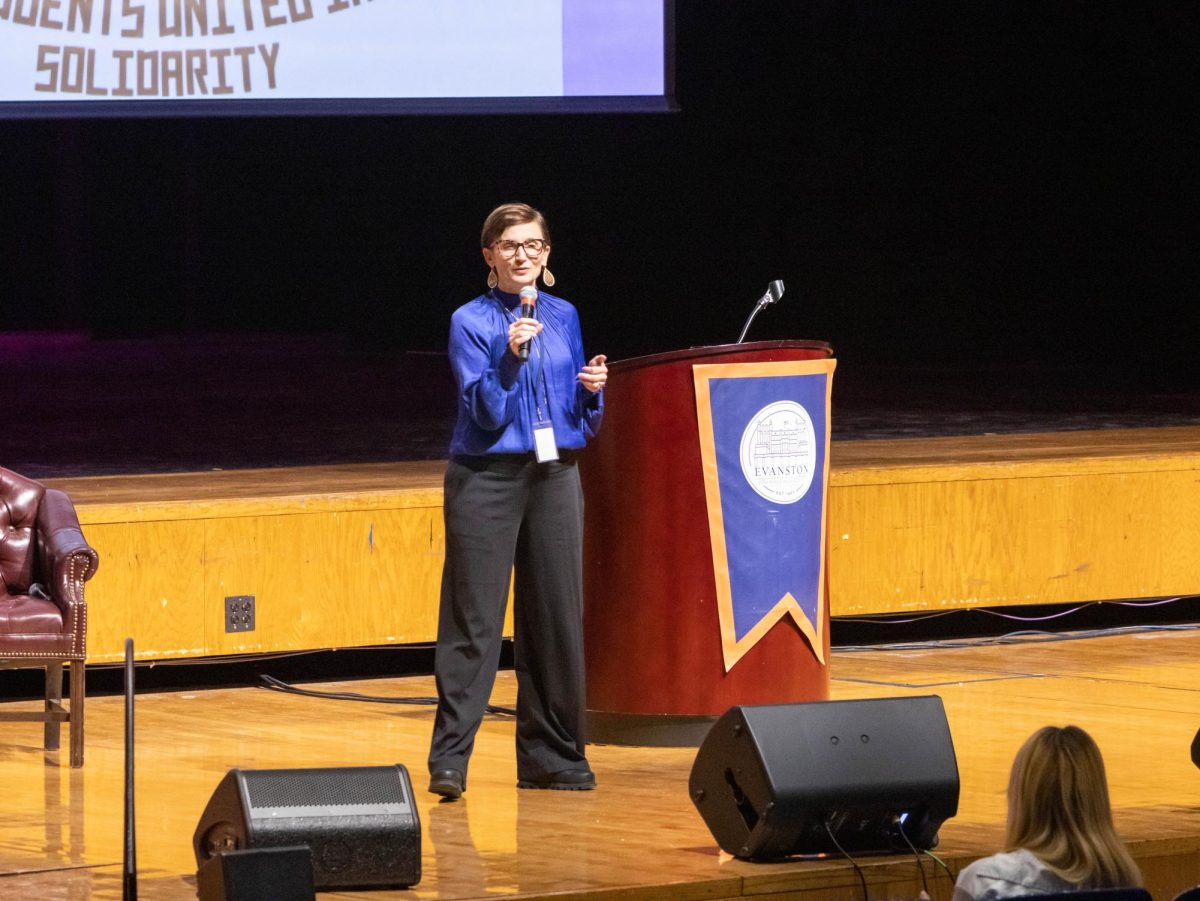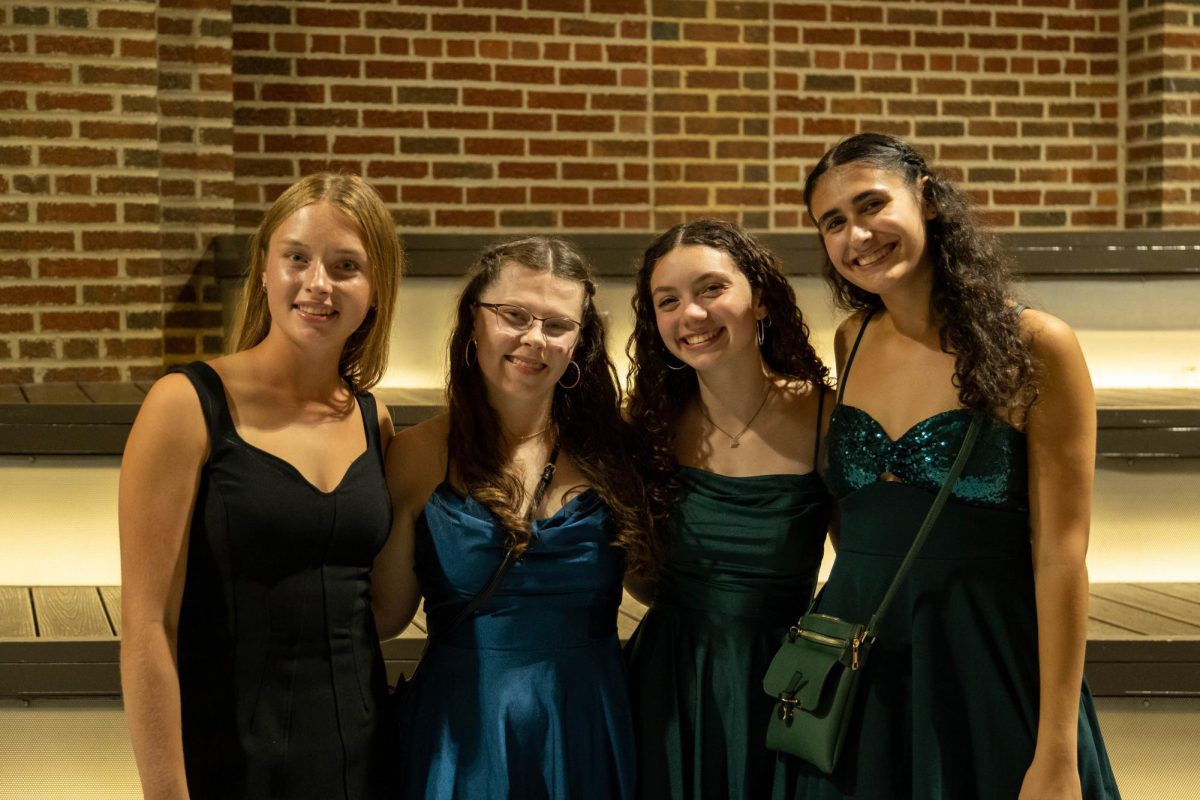The Lil Nas X That Could – Old Town Road and Popular Music In The Internet Era
September 27, 2019
I’m gonna take my horse to the old town road, I’m gonna… I’m sure if you’ve been on the Internet, listened to the radio, or even just been in a public place this summer, you could finish the line for me. “Old Town Road,” the country-trap smash hit from 20-year-old, Atlanta based breakout artist Lil Nas X, spent 19 weeks atop Billboard’s Hot 100, solidifying its status as not just the song of the summer, but undoubtedly the one song this year will be remembered for.
The song, under two minutes in its original version, blurs the lines between country and trap, and has sparked many discussions about which of those genres it falls closer to after Billboard removed it from its country charts in April when it first peaked at #1. They cited that “it does not embrace enough elements of today’s country music to chart in its current version.” This didn’t stop the song’s rise to being a cultural phenomenon one bit, as it just got more people talking about it. A remixed version featuring Billy Ray Cyrus, primarily known as a one hit wonder from his 1992 hit “Achy Breaky Heart”, was released shortly after the song hit #1 on the Billboard Hot 100, and the cross-genre, perhaps even cross generational appeal, helped solidify its status on top for the next 19 weeks, an all time record.
This all begs the question of how we let a novelty song about riding on a horse become the most successful song of the year. Why do we even take this type of song seriously? Perhaps “Old Town Road” is big enough to be considered a defining song of not just the year but our entire generation.
It all starts with a classic rags to riches story. The original version of Old Town Road was released on December 3rd, 2018, Lil Nas X (real name Montero Lamar Hill) having composed the song with nothing more than a beat he purchased anonymously from an online store for $30 and a few lyrics that reflected the place he seemed to be in life. Having a troubled home life from a young age, the Internet, and specifically Twitter, was his escape from it all during his teenage years. Being savvy with the platform and determined enough to do so, he rose to prominence as a Twitter personality in 2017, albeit not under his own name, where he was involved in “Tweetdecking,” or colluding on multiple accounts to artificially help certain tweets go viral. In 2018 he dropped out of college to pursue a musical career, which is the kind of risk that would be hard to take for many, especially in Hill’s type of circumstances, as at the time he lived with his sister who made it clear that he had to move out soon. His frustrations with his situation partly inspired lyrics in the song, such as the chorus, “can’t nobody tell me nothing.” Once he released the song, he began creating memes to promote it, and it eventually rose to prominence as a sound on the app TikTok in January 2019.
TikTok was created in its current form in August 2018 after its parent company, Chinese-based ByteDance, merged with Musical.ly, an app that allowed users to create videos of themselves lip syncing to popular songs, had previously risen to prominence in 2014. TikTok expands this feature to allow users to have any sound in the background, not necessarily music, making it a versatile platform with everything from short comedy sketches to people bandwagoning onto the latest dance challenge. Personally, my first experience with the song was on TikTok around this time. A casual user of the rapidly growing app, I heard it once as the background for a video and didn’t think much of it, but the next time I went on the app days later it was everywhere.
Over the next couple months from when I first saw it being used in TikTok videos, I remember seeing Old Town Road enter the charts and eventually ascend to #1 on the Billboard Hot 100. It may have seemed like an unprecedented rise to the top, but in reality, the seeds had long been sown for a novelty song doubling as a meme shooting to the top of the charts. And TikTok was the perfect catalyst.
The distinctive features of TikTok aren’t only limited to the diversity of the content one can find on the app, as perhaps the other major reason for the app’s massive growth is the way it promotes new content. TikTok’s algorithm favors promoting new videos that are getting more watch time (as in, videos that people are watching fully and not swiping away from) over content from already established creators. This not only means social mobility on the app is actually possible, as opposed to established platforms like Twitter and Instagram where all popular content is generally from people already famous on the app, but it creates an environment where anyone can in theory start a trend. In the case of “Old Town Road,” just a few people who discover the song, like it enough to create a video with it, and gain traction can cause an exponential increase in the number of people using the song in their videos, meaning more people from there will discover the song.
Old Town Road is far from the only song to have rode the TikTok algorithm to eventual mainstream popularity and success, but it is the one that has made the biggest dent on the establishment of the music industry. And maybe it was the first TikTok born “meme song” with mainstream success, but songs capturing the viral energy Old Town Road had have long been topping charts throughout this decade. First, it’s important to clarify the definition of a meme song. While it’s not a completely unheard of term, there is no universally agreed upon definition, so I will be defining them as songs that grew to relevancy by becoming part of an Internet meme or trend, or by becoming an Internet meme themselves. This only encompasses songs that initially grew to popularity as a meme, not older songs that became memes many years after their release, like Toto’s “Africa” (1982) and the ill famed “Never Gonna Give You Up” by Rick Astley (1987). An easy way to becoming an Internet meme in of itself is to just be a weird novelty song that grabs attention for its uniqueness, and Old Town Road easily checked all the boxes that make up what it means to be a meme song.
It’s safe to pinpoint the start of the rise of meme songs around the time the Internet became massively popular. I’d personally call Soulja Boy’s 2007 song “Crank That” the first real breakout mainstream hit to rise to success off of Internet virality, which grew on YouTube and MySpace, and would eventually spend seven weeks at #1 on the Billboard Hot 100. It had many traits that future meme songs would also possess, such as an accompanying dance trend, being catchy, and perhaps most importantly, being annoying to the point that most people don’t take the song seriously, or at least don’t view it in the same light as another, less polarizing song. But even if we don’t take it seriously, it’s still hard to not be familiar with the song because it’s everywhere, and “Crank That” remains a recognizable tune to this day. In fact, the parallels between Soulja Boy and Lil Nas X are very much there — both were teenagers who rose to fame overnight off a debut song that went viral. Both largely popularized the genres that their respective hits fell into, “Crank That” being described as snap (a subgenre of crunk) and “Old Town Road” being described as country trap, which in turn are both derived from hip hop. Both even originally hail from Atlanta. But as “Crank That” proved some silly song written by a teenager can gain Internet popularity and eventually mainstream popularity, many successors would follow.
The music of the 2010s as a whole would be largely defined by hit songs sharing some traits with the precedent Soulja Boy created for meme songs — growing to popularity on the Internet, being despised by many, and often being accompanied by a dance trend. Justin Bieber’s “Baby” (2010) is the next song that comes to mind, checking the first two boxes, and while it may not have completely created his career, it solidified Bieber’s status as a well known artist and would help him go on to be on of the most commercially successful artists of the 2010s. 2011 saw then-14 year old Rebecca Black become famous, but also widely hated, over her song “Friday”, which went viral off of YouTube. Many meme hits are criticized for just being bad songs, but “Friday” was widely deemed as being strikingly bad, which I’d attribute its viral success to and also the fact that it would later become a cult classic. 2012 saw PSY’s “Gangnam Style” and its accompanying dance trend become the most watched video on YouTube until being overtaken in 2017. 2013 brought on Baauer’s “Harlem Shake” and its dance trend, Silento’s “Watch Me” in 2015 made a career out of another Atlanta based teenager and popularized a dance trend, and Rae Sremmurd’s “Black Beatles” topped the charts in 2016 after rising to prominence as the background track of the Mannequin Challenge. There are many more meme songs that gained mainstream success in the 2010s, but these were some of the most prominent particularly to defining the kind of song Old Town Road would become. I’m sure naming these songs was also a trip down memory lane for many of us; while they all had varying levels of chart success, all of them were very popular during their peak and because of this, I think the idea of a meme song defines more than just contemporary music trends — they define our generation.
It may sound bold to claim the lives of an entire generation’s individuals have been greatly impacted by just a few songs, and that’s not necessarily what I’m saying. Of course, we all have our own tastes; while I’m sure you’ve heard the majority of the songs I named as being influential in defining what it means to be a meme song, you may not like any of them or the genres they come from at all. Chart-topping music today generally isn’t even my go-to, but it’s important to recognize the cultural impact it has, and the fact that charts do mean something. Charts are calculated based on a variety of factors including sales, streams, and radio airplay — all but the latter of which we the people can directly impact. It’s a refreshingly democratic system, and of course not everyone will be satisfied because we all have different tastes, but if a song is performing well on charts it means there have to be a lot of people out there who like it enough to buy it or stream it. When you connect that with the fact that so many meme songs have performed well on the charts since Soulja Boy defined what that type of song would be in the age of the Internet, it’s easy to realize maybe these songs are having just enough of an impact on enough people that you could at least generalize an entire generation into being impacted by them. If a certain type of songs are consistently becoming popular, in this case meme songs, that means there’s a trend and it even furthers the likelihood there’s a generational, cultural impact somewhere to be found.
However, to really claim the influence of certain songs on our current generation, you have to look back at the precedent past generations have set for what it means to define a generation based on its music. The 1960s are easily the first decade that comes to mind when thinking about the way youth culture defined itself and made its mark on society, as well as being a prolific era for music. As can be said for many decades, youth culture seemed to define the entire sound of the 60s, but no song better encapsulates this than The Who’s “My Generation” (1965). The song is an anthem directly about generational identity, teenage angst and feelings towards their older counterparts, reflective not only in the lyrics themselves but also in Roger Daltrey’s fast and aggressive delivery of them. Specific to the time, it explored themes about the alienation young people felt from the rest of society then on ongoing issues such as civil rights and the Vietnam War. The 80s are heavily romanticized to this day in large part due to the youth culture from the time, with perhaps no song better being representative of it than Simple Minds’ “Don’t You Forget About Me” (1985), in part due to its association with another generation defining piece of media, John Hughes’ classic The Breakfast Club. And the 90s brought along Nirvana and the rise of grunge, with their signature hit “Smells Like Teen Spirit” being described today as an anthem for Generation X. I’d compare the way it burst onto the scene as something new in music, being the first real grunge hit and effectively ending the 80s era of pop and rock, similar to how Old Town Road in many ways popularized its own genre and went against everything we’d seen before in popular music. Now you could ask anyone who came of age during those times and not all of them would call any of the mentioned songs one that impacted them growing up, or even their generation, but they were all big enough hits on the charts and remembered enough today to be icons of their respective decades. Similarly, I don’t think everyone in the current generation of youth would agree Old Town Road is the most influential song on their upbringing. Individual tastes vary too much to come to any sort of conclusion here, unless you want to generalize heavily, but there’s no way to talk about eras of music without generalizing. Only hindsight can truly tell, but if any song will be remembered from the current era 30 years from now, I’d put my money on “Old Town Road.”
Another thing only time will tell are the characteristics of a generation. While I would claim “Old Town Road” has done enough to be considered a generation defining song, just like “My Generation” and “Smells Like Teen Spirit” before it, there’s still a lot of time for us to really decide what this generation is about. The one thing these generation defining songs have in common is that they’re all tinged with a hint of rebellion. The message of the song can be interpreted as voicing rebellion from something, whether it be society in general, the music industry establishment, or both. Parallels in the latter can specifically be found comparing “Old Town Road” to “Smells Like Teen Spirit”. Both songs came out of nowhere from previously unknown artists and were unlike anything else in music at the time. As figures, Lil Nas X and Nirvana lead singer Kurt Cobain, who was the mastermind behind the composition of “Smells Like Teen Spirit”, could be easily comparable as well, not just because of how they got popular overnight but how they gave an outlet of expression to groups of individuals who may not have had one in popular music at the time, due to the uniqueness of their sound. As described by punk legend Iggy Pop on Rolling Stone’s 2010 “100 Greatest Artists of All Time” list, “He was Johnny B. Goode. He was the last example I can think of within rock & roll where a poor kid with no family backup from a small, rural area effected a serious emotional explosion in a significant sector of world youth.”
Beyond just the overall composition, both songs have key lyrics that can be interpreted as being directly critical of some sort of establishment, with “Smells Like Teen Spirit” lines like “Here we are now, entertain us” I’d interpret as conveying feelings of being unimpressed with the existing scene in music. A line like “Can’t nobody tell me nothing” in “Old Town Road” conveys a similar sentiment, not only with Lil Nas X using it to describe him carving his own path in life but also perhaps his own method of reaching success. It’s not too far fetched to think some listeners may have related with the free spirit mindset Lil Nas X seems to reflect in his lyrics, or at least some of them. It should be noted that not all of the lyrics of “Old Town Road” have much substance. The hook and chorus can be interpreted meaningfully, but much of the verses contain just listing off status symbols (albeit a typical practice in the lyrics of both modern country and trap) and otherwise silly lines that might make a listener once again question why they’re taking the song seriously. But some of those lines go back to solidifying the status of “Old Town Road” as a meme song, and the balance of substance and silliness just further adds into the uniqueness of the song. On the surface Lil Nas X provides humorous and quotable lines to draw the attention of a generation that values memes heavily, helping establish himself as appealing to and defining the current generation of youth. But there’s still plenty of meaning tucked away in some other lines.
There’s still more to be said about Old Town Road than the path it had to becoming such a hit, or the way it may very well define our generation. Its rise to the top, composition, and the way it allowed itself to stay in the #1 spot on the Billboard Hot 100 for 19 weeks are sure to have a lasting effect on the music industry as others take note. Copycat hits have already emerged through similar methods, such as Blanco Brown’s “The Git Up”. Another country-trap crossover from a previously unheard of audience that largely grew off TikTok, after its May release it has since topped the Billboard Hot Country Songs. Perhaps the biggest thing Old Town Road did right to solidify its presence, however, was the aforementioned remixed version with Billy Ray Cyrus furthered the song’s blend of genres and generational appeal. Remixing already established popular songs isn’t unheard of in music these days, but it would’ve been easier to predict Lil Nas X recruiting an established rapper that could coast off name recognition to perform a guest verse; not a washed up country singer who had his only major hit nearly 30 years ago. The Billy Ray Cyrus remix far and away became the most popular iteration of the song and will be the one that we remember years from now, and it’s easy to attribute that to the way it feeds off the song’s already existing idea of just being something different, not like anything else on the charts these days. It wasn’t even the only remix that was released, as another move Old Town Road did right that future hits may take notes from are the additional remixes. One featuring Diplo was released in late April, and another one adding in Young Thug and Mason Ramsey came out in late July well into the song’s record-breaking chart run. While content wise the remixes may have not added much, they kept attention geared towards the song as more people would come back to listen to the new remix perhaps out of curiosity, keeping the song fresh in everyone’s heads for a little while longer.
Another ingredient in Old Town Road’s formula for success was its wide appeal to different age groups, specifically being fairly kid-friendly. Being too geared towards children isn’t always considered a good thing in music, as it might make a song less likely to be taken seriously among the core popular music consuming demographic of teenagers and young adults. But younger children are at the end of the day still an audience for popular music, and a lot of the biggest contemporary hits explore far more explicit themes than we might want our kids singing along to, making Old Town Road a nice break from some of that. It’s non-explicit depending on your tolerance of a select few phrases, but even more of the appeal just comes from the sound — it’s danceable, easy to sing, and catchy. Just being as upbeat as it is might be enough in today’s era of more melancholy sounding hits. But the overall appeal of the song’s ethos popularized by teenagers has shown that it can trickle down to even younger audiences. As The Chicago Tribune described, “All you have to do is watch the viral video of Lil Nas X setting off an elementary school to see that he’s touching other nerves; to these kids, he’s Kurt Cobain tapping into an eternal wellspring of rebellion.” It’s not a meme song that may or may not be taken seriously if your audience is young enough; all the kids want is a feel good tune to sing and dance to and that’s exactly what Old Town Road is to many.
As we move forward, I think it’s reasonable to predict that everyone in the music industry, from already established superstars to up and coming hopefuls, will take a page out of “Old Town Road”’s book to success. Though no song or artist will ever be able to replicate everything Lil Nas X did right in building his hit song and a career out of it, the music industry and the way we look at song growth may never be the same. There are many possible trends one could think of that “Old Town Road” could easily lead to, from making it easier for unknown artists to establish mainstream credibility to maybe seeing more novelty songs. But the single biggest conclusion I think we can draw is that our generation controls the music industry trends now. Maybe we did before, but if we can stick a song by a 20 year old no name at the top of the charts for 19 weeks, I have no doubt we do now. Our time is influencing music is here to stay, and “we’re gonna ride ’til we can’t no more.”












Drew Ekstrum • Oct 21, 2019 at 12:02 pm
FCFB Club